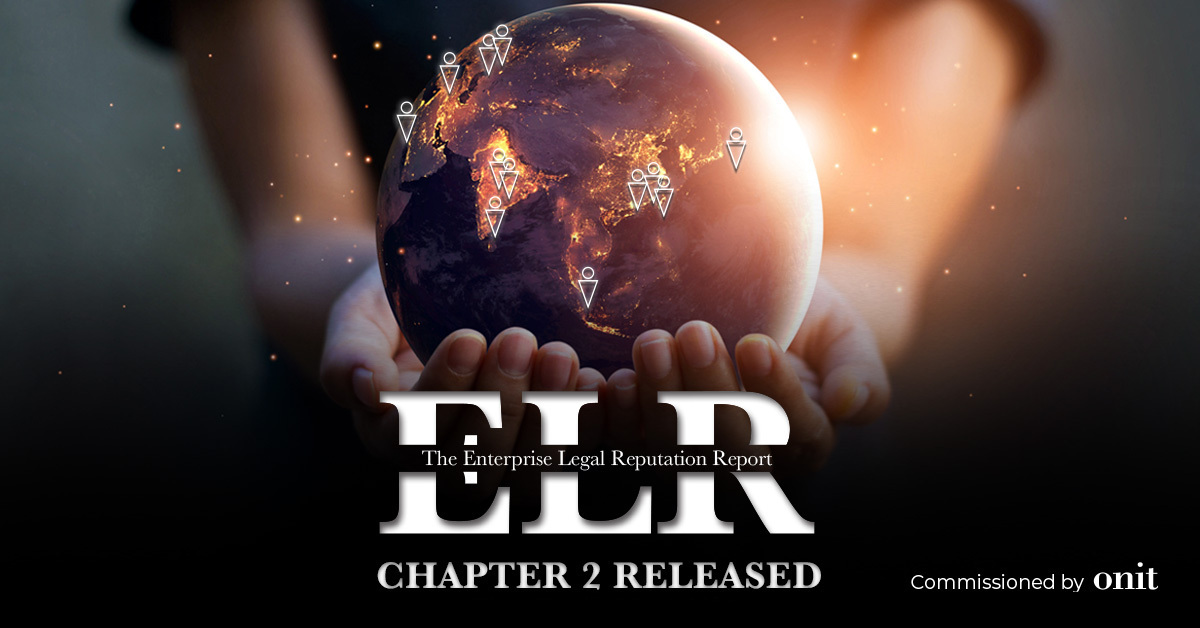
Dieser Artikel ist der zweite unserer vierteiligen Blogserie, die sich ausschließlich mit dem Thema Matter Management und seinen verschiedenen Aspekten befasst. Wenn Sie den ersten Artikel noch nicht gelesen haben, klicken Sie hier, um dies nachzuholen. Im zweiten Teil werden wir uns auf die Frage konzentrieren, wie digitale Matter Management-Plattformen helfen, die Verwaltung von Rechtsangelegenheiten zu optimieren und zu vereinfachen.
Die Antwort ist simpel: Wenn wir die Kernbestandteile einer Legal Matter betrachten, können wir leicht die Vorteile und die Effizienz ableiten, die Matter Management-Systeme für Rechtsabteilungen bieten. Dies läuft auf Folgendes hinaus:
ZENTRALE UND SICHERE DOKUMENTENVERWALTUNG
Matter Management Systeme fungieren als zentrale Plattform zur sicheren Verwaltung von Rechtsangelegenheiten und deren zugehörigen Dokumenten und bieten einen geschützten Ort, um auf wichtige Dokumente zuzugreifen. Wesentliche Funktionen für die Dokumentenverwaltung sind in der Regel vorhanden, z. B. Redlining, individuell anpassbare Metadaten, Tagging, differenzierte Berechtigungsvergabe usw. Zusätzlich integrieren sie oft nahtlos mit MS Office und Google Workspace, was die Bearbeitung und Zusammenarbeit an Dokumenten effizient gestaltet.
Matter Management Tools erleichtern auch das rasche Auffinden von Dokumenten und deren Inhalten durch leistungsfähige Suchfunktionen. Einige dieser Systeme bieten Funktionalitäten für das Vertragsmanagement. Beispielsweise ermöglichen sie die Integration von elektronischen Unterschriften und die automatisierte Extraktion von Klauseln für vertragsbezogene Angelegenheiten.
AUFFINDBARES KNOW-HOW
Ein Vorteil der Verwaltung von Rechtsangelegenheiten in einem zentralen System besteht darin, dass alle mit der Matter zusammenhängenden Informationen und Kenntnisse an einem Ort gesammelt werden, einer Single-Source-of-Truth. Außerdem werden diese Daten strukturiert und taxonomisch geordnet. Gute Matter Management-Systeme machen diese Daten nutzbar und sorgen dafür, dass Know-how bei Bedarf leicht auffindbar und im Kontext verfügbar ist. Einige Systeme für das Matter Management nutzen sogar künstliche Intelligenz, um die Bereitstellung von Wissen zu vereinfachen und zu unterstützen, Daten zu verknüpfen, diese auf dem neuesten Stand zu halten und sie in einen Kontext zu stellen. Einige Matter Management-Plattformen nutzen Integrationen mit anderen Systemen, um Daten zu zentralisieren und mehrere Quellen durchsuchbar zu machen; andere integrieren auch Chatbots und Tools zur Entscheidungsautomatisierung, um Antworten auf spezifische Fragen und Umstände zu liefern, anstatt nur Suchergebnisse.
EFFIZIENTE KOMMUNIKATION UND ZUSAMMENARBEIT
Infolge der globalen Pandemie und der verstärkten Nutzung von Remote-Arbeitsmodellen gewinnen führende Matter Management-Plattformen nun durch die nahtlose Integration mit marktführenden Kollaborationstools wie MS Teams an Bedeutung. Matter Management-Plattformen agieren nicht bloß als Dokumentenarchiv, sondern als umfassende Kollaborationssysteme. Sie erlauben es sowohl internen als auch externen Nutzern, gemeinsam an Rechtsangelegenheiten zu arbeiten. Dies erweist sich besonders wertvoll, wenn Rechtsteams in enger Kooperation mit externen Anwälten agieren.
Kommunikation wird ebenfalls zu einem integralen Bestandteil dieser Matter Management-Plattformen. Sie bieten soziale Kollaborationsfunktionen wie Nachrichten, Kommentare und gemeinsame Dokumentenfreigabe. Ein klar erkennbarer Trend zielt darauf ab, die Nutzer in ihrem gewohnten Arbeitsumfeld abzuholen. Daher ist es absehbar, dass Matter Management-Tools zukünftig verstärkt mit persönlichen Produktivitäts- und Kollaborationstools integriert werden, um eine optimale Arbeitsweise zu ermöglichen.
AUTOMATISIERTE ARBEITSABLÄUFE UND SELF-SERVICE FUNKTIONEN
Die Automatisierung standardisierter Arbeitsabläufe und die Reduzierung manueller Tätigkeiten sind essenziell, um Rechtsprozesse effizienter zu gestalten. Aus diesem Grund integrieren Matter Management-Plattformen häufig Funktionen zur Workflow-Automatisierung. Die Bandbreite der Prozessautomatisierung reicht von vordefinierten bis hin zu individuell konfigurierbaren Lösungen (oft als No/Low-Code-Automatisierung bezeichnet). Dieses Spektrum ermöglicht die Optimierung verschiedenster Matter-Prozesse, wie Benachrichtigungen, Legal Intake, automatisierte Dokumentenerstellung, Genehmigungsprozesse, Risikoeskalationsmechanismen und Vertragslebenszyklen – um nur einige Beispiele zu nennen.
Ein wesentlicher Vorzug der Automatisierung liegt in der Förderung von Self-Service. Rechtsteams sind stets ausgelastet, und indem sie anderen ermöglichen, selbständig zu agieren, können sie sich vermehrt auf strategischere Aufgaben konzentrieren. Matter Management-Plattformen werden daher dazu genutzt, innerhalb des Unternehmens die Empowerment-Ebene zu erhöhen. Hierbei erhalten Beteiligte die Befähigung, eigenständig Dokumente zu erstellen und auf relevante Richtlinien sowie Expertise zuzugreifen.
KLARE ARBEITSSTRUKTURIERUNG
Die Bearbeitung einer juristischen Angelegenheit erfordert eine komplexe Koordinierung und Verwaltung von Ressourcen, Status und Risiken, um eine termingerechte und budgetkonforme Abwicklung sicherzustellen. Innerhalb dieser Komplexität spielen Matter Management-Systeme eine bedeutende Rolle, indem sie vielfältige Tools zur Unterstützung von Planung, Ressourcenzuweisung und Zeitplanung bieten. Angefangen von Aufgabenverwaltung, Arbeitszuweisungen und Projektzeitplänen bis hin zu Kapazitätsüberwachung, Teamkalendern und Fristen – Matter Management-Tools fungieren als Navigationshilfe für die Erfassung notwendiger Tätigkeiten und Ressourcen, um die ordnungsgemäße Durchführung der Matter zu gewährleisten.
In manchen Fällen umfassen Matter Management-Plattformen ebenfalls Funktionen zur Zeiterfassung. Dadurch können Rechtsteams die auf die Angelegenheit verwendete Zeit verfolgen. Doch bei der Projektsteuerung geht es nicht nur um Ressourcenverwaltung, sondern auch um die Überwachung von Statusänderungen, das Management von Risiken und die Gewährleistung transparenter Berichterstattung. Matter Management-Tools bieten folglich Instrumente, die eine umfassende Einblick in die Aktivitäten einer Legal Matter garantieren.
TRANSPARENTES SPEND MANAGEMENT
Während viele Angelegenheiten intern behandelt werden, erfordert ein erheblicher Anteil dennoch die Mitwirkung externer Rechtsberater. Ganzheitliche Matter Management-Tools bieten vielfältige Funktionen, um die Zusammenarbeit mit externen Dienstleistern zu unterstützen. Diese Funktionen umfassen die Identifikation geeigneter Rechtsberater, die Budgeterstellung, Ausgabenüberwachung, Rechnungsprüfung, Einhaltung von Abrechnungsrichtlinien sowie Genehmigungsverfahren. Da die Ausgaben eine wesentliche Komponente jeder Rechtsangelegenheit darstellen, ergibt es Sinn, dass das Ausgabenmanagement integraler Bestandteil eines umfassenderen Matter Management-Systems ist. Letztlich lassen sich bedeutendere Erkenntnisse gewinnen, wenn Ausgabendaten mit anderen Informationen zu den Angelegenheiten verknüpft werden.
Die Analyse der Ausgaben einer Anwaltskanzlei im Verhältnis zu Durchlaufzeiten und Ergebnissen kann beispielsweise Einblicke liefern, ob eine Rechtsabteilung den Mehrwert ihrer externen Dienstleister angemessen erkennt. So ermöglichen Matter Management-Tools eine strategische und datengestützte Herangehensweise, um die Kooperation mit externen Rechtsberatern optimal zu gestalten.
ECHTZEIT ZUGRIFF AUF DATEN
Je mehr Matter Management-Aktivitäten in den Systemen durchgeführt werden, desto mehr nützliche Daten enthalten sie. Diese Daten umfassen Aspekte wie Ausgaben, Status, Ressourcen, Verträge, Risiken und den Legal Intake. Es ist von grundlegender Bedeutung, dass diese Daten zugänglich sind, effizient abgefragt werden können und schnell zu verwertbaren Erkenntnissen führen.
Viele Matter Management-Systeme stellen leistungsfähige Berichts- und Analysetools bereit, mit denen Matter-bezogene Daten gefiltert und extrahiert werden können. Alternativ können diese Daten mithilfe von Diagrammen und Grafiken in Dashboards oder durch Integrationen mit Tools wie Power BI visuell aufbereitet werden. Wichtig ist zu betonen, dass moderne Matter Management-Systeme über bloße Berichterstellung hinausgehen. Sie nutzen die vorliegenden Daten, um nicht nur vergangene Ereignisse darzustellen, sondern auch zukünftige Ergebnisse zu prognostizieren und aufkommende Trends zu identifizieren.
UMSETZUNG IN DIE PRAXIS
Matter Management bildet eine umfassende Disziplin, die die effiziente Koordination und Abwicklung sämtlicher Aspekte einer Rechtsangelegenheit umfasst. In der heutigen Zeit gewinnt die Optimierung des Matter Management-Prozesses zunehmend an Relevanz. Trotz der Komplexität vieler Rechtsfälle können bedeutende Fortschritte durch den Einsatz von Legal Tech-Lösungen erzielt werden, die die Optimierung des Matter Management unterstützen.
Statt einzelne Tools isoliert einzusetzen, empfiehlt es sich, ganzheitliche Plattformen für Matter Management oder Enterprise Legal Management-Lösungen in Betracht zu ziehen. Diese Lösungen besitzen das Potenzial, den gesamten Lebenszyklus einer Legal Matter zu optimieren. Sie eröffnen einen schrittweisen Ansatz und bilden eine solide Grundlage, um Ihr Team auf dem Weg zu einer erfolgreichen Zukunft zu führen.
Lesen Sie Teil III dieser Serie: 7 Aspekte, die Rechtsabteilungen bei der Auswahl eines Matter Management-Anbieters beachten sollten.








